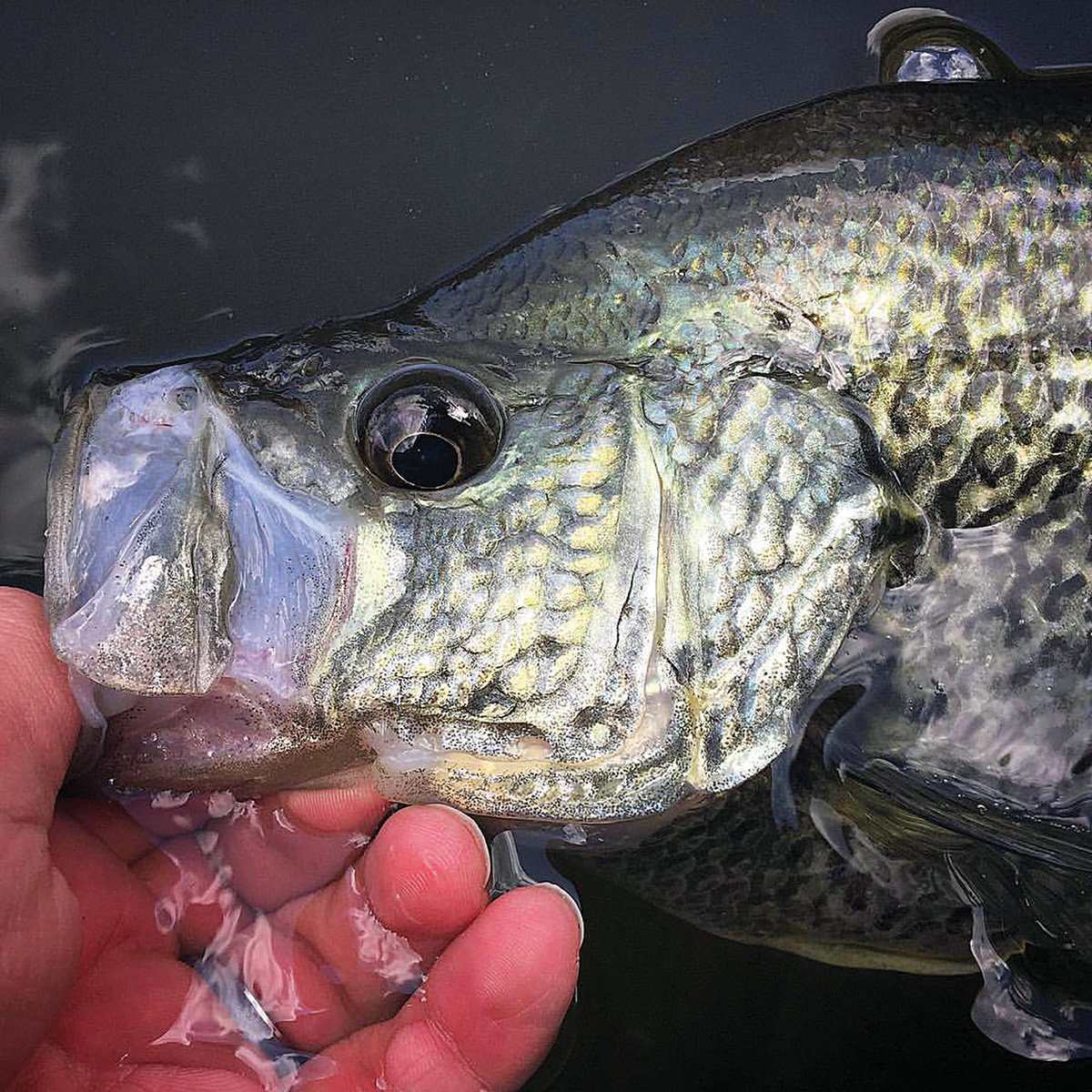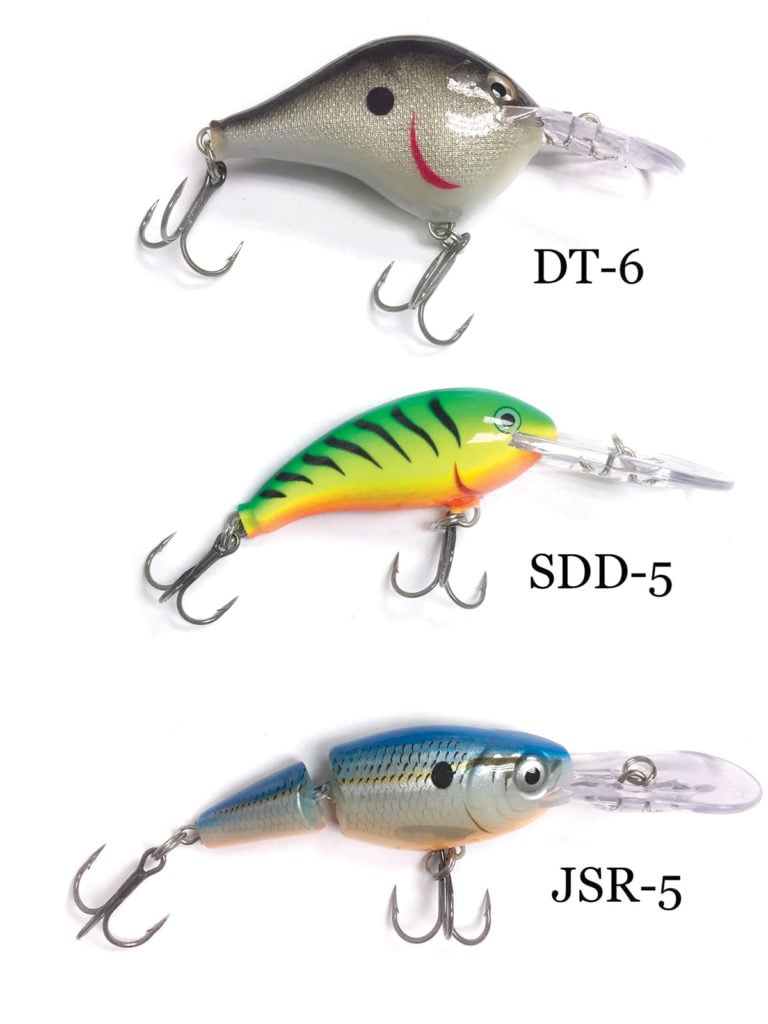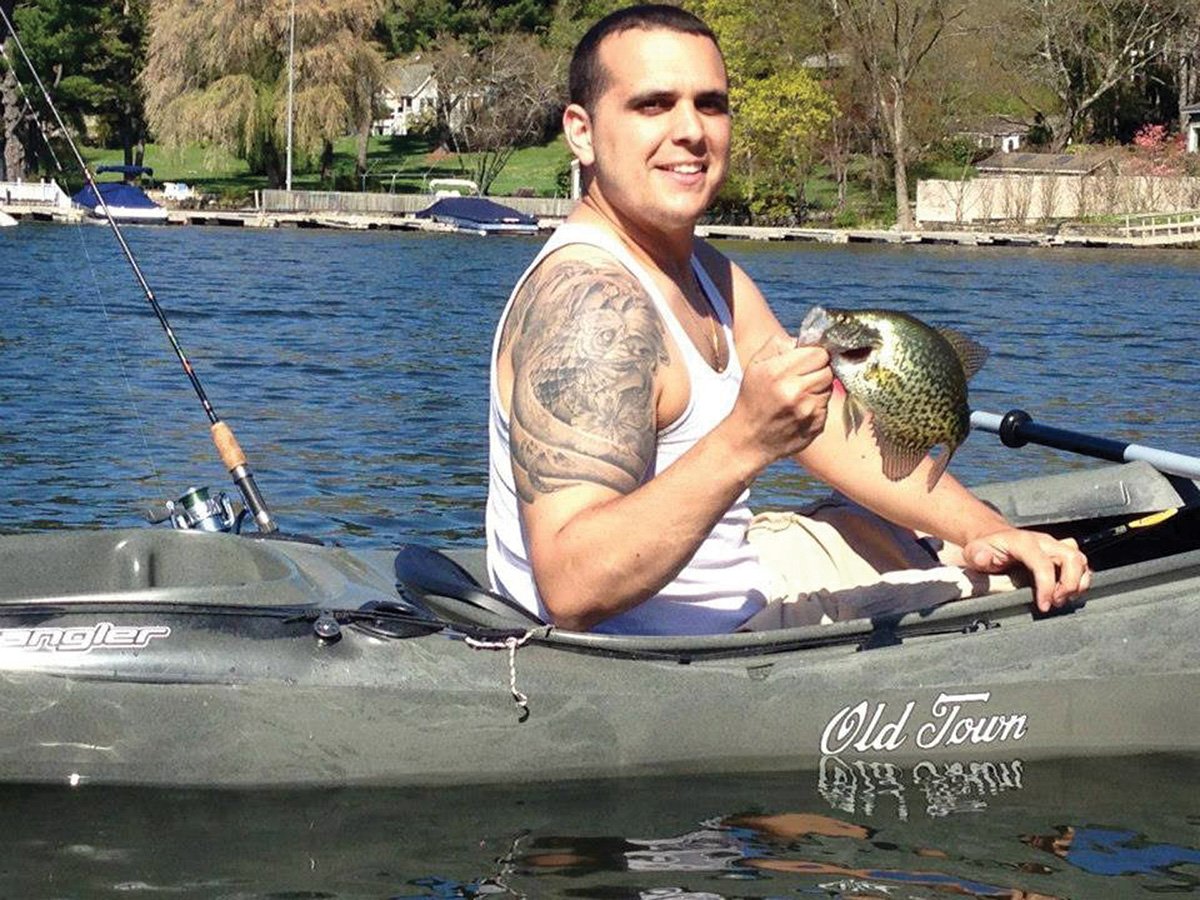
Hefty slab crappie are a prized catch to many anglers out there. Chasing big spring crappie can be an absolute blast, especially when the action is red hot. After the spawn fish can still be found in the shallows as they begin to gorge themselves once again. However, as fish go post-spawn and the heat of summer kicks in, they soon disappear from their spring spawning grounds. Crappie head for the nearest drop-off to deeper water and hold on the edge. When that feeling of summer begins to creep up on us, your tactics have to change if you want to find and catch quality fish. As I always say, you must understand the fish in order to catch the fish.
Trolling is the name of the game when it comes to this time of year. Not that you can’t fill a cooler by vertical-jigging as usual, but trolling small crankbaits is an effective method and for a variety of reasons. When hunting crappie, I am always looking for quality over quantity so I try to understand not only what these fish are doing but also what the bigger fish are doing and why. When crappie move deeper into cooler and more oxygen-rich water, they are also chasing baitfish. The usual scenario on lakes takes place in flats and basin areas, and deep is a relative term of course, but I’m talking deeper than where you found them last month. These fish are always on the move and spend their days foraging as they cruise around.
Why Troll?
One of the greatest advantages to trolling for crappie is the ability to easily cover a lot of water. It is important to do so for these fish because they are constantly on the move. Unlike other fish that like to hold tight to structure, crappie are itinerants. One day they can be stacked in a certain spot and the next they’re ghosts. Their location changes frequently based on food availability. Obviously, electronics can take out some of the work and give you an edge. Not everyone has that advantage but trolling cranks is a great technique for anyone to narrow down their search.
Another reason I love fishing this way is because I know what I’m getting when running cranks. They stay at consistent depths so when fish are located, you know where you want to be fishing. Running multiple rigs through a school of hungry crappie can become a bit chaotic and very exciting. I’ve found that I can pluck fish after fish with a jig but sometimes they can be very tight-lipped. Instead of fishing a jig that they watch, inspect and subsequently reject, try running a crank by their noses and see how fast they snatch it up. I’ve found that when they are in the mode of chasing baitfish they respond well to a crank that wobbles on by.
Choosing Cranks
There are a few other factors that play into things as well. Time of day is probably the most important in my book. Crappie venture shallower during low-light hours to stalk baitfish with those big eyes of theirs. During the day when the sun is high overhead, deeper-diving baits better suit your needs.

What crank baits to use? Well, there are quite a few options on the market to choose from. Names like Salmo and Bandit crankbaits are becoming popular for trolling-up dinner-plate-sized crappie. I’m pretty biased towards Rapala when it comes to a lot of hard baits, but definitely for the ones that I use for crappie. The Rapala DT-6 is a good one to use in shallower water (6 feet or so) leading off to those immediate drop-offs as fish transition post-spawn. The bait itself has a good profile and looks a little chubbier than others. The SDD-5 is a newer one called the Shad Dancer. It has a deeper-diving action (7- to 10-foot range) to get down if fish are hanging closer to the bottom. The color options from this line are also very intense. Another option that Rapala offers is one that I lean on heavily and that is the Jointed Shap Rap. The JSR-5 specifically is the one that I like, and its diving ability has a wider range (6 to 13 feet) which makes it even more versatile.
I like to use more natural colors in clearer water and brighter ones in stained water. My home lake turns pretty murky during the summer months, and I do very well with fire tiger color schemes right on into the fall. All the cranks that I like to run are about 2 inches in size. Bigger cranks work, but I’ve also found that crappie prefer smaller baits in general. Cranks this size stick to that important guideline while offering a different approach instead of hand tied jigs or micro soft plastics.
Tuning the Troll
Choosing the right line shouldn’t have to be difficult. Everyone has their preference and I’m a fan of sticking with what I know works. In recent years I have become a fan of P-Line fluoroclear line. It is invisible and strong and very smooth. The water is usually stained by the time I begin trolling for crappie, but transparency is really never a bad thing. I like to use 8-pound test for good security in case I get hung up in brush, weeds or happen to get a bite from something larger. For comparison, I use 2- to 4-pound test when I jig for crappie. This is a big jump from my jigging set-up but it gets the job done. Snap swivels are useful as well in case I want to swap my lure. Certain colors and sizes come into play and sometimes I need to change out quickly. When trolling cranks the desired speed usually lies within 1.5 to 2 mph. Staying in that range is perfect to keep your baits running right. Any faster and you’ll pass over a lot of your target species. Just make sure that your cranks run true prior to actually using them. This can be achieved by tweaking the eyelet that is attached to the lip of the lure. Some cranks may run a little crooked and veer off to one side, so adjusting them beforehand is recommended.
The more lines you have out the more chance you have of hooking up. However, it does limit you in other ways. If you sweep through an area and get some fish, it takes a little while to circle around and come back through for another pass. Limiting the number of rods that you use makes it easier to turn the ship around and get back into the action quickly. Tossing some cranks out the back of a kayak is another fun way of trolling for crappie.

The set-up can vary depending on how many rods a person is legally able to use at once, and that varies state to state. In my home waters of Connecticut, we are allowed to use three rods at a time, but I feel that two a piece is more than enough, and it is much easier to operate as tangles and snags are less frequent. Rigging up two 6-foot rods off the back and 8-foot rods off each side gives me a great spread that is easy to work with. Also, having rods that have good backbone for trolling but a sensitive enough tip for solid hooksets is imperative. Fishing with meat sticks results in hooks popping free from the lips of a paper-mouth crappie. A rod tip that has a little more give really allows those hooks to slide in and purchase the fish’s mouth.
Sometimes I just use two rods because another quirk of the fish that I have picked up on is that they respond well to a sharp turn. A few passes over a suspended school yields good results, but if the bite slows down then try changing direction. I’ve noticed that taking a turn that swings the bait around the crappie in a slightly different direction oftentimes gets a hit. Observing their behavior gives me clues, and seeing them acting in this manner suggests that some fish are watching a repetitive action without giving a reaction. Yet once the direction changed sharply, they jump on it. That right there, is a trigger. If you can’t get a hunger bite, get an aggression strike!








